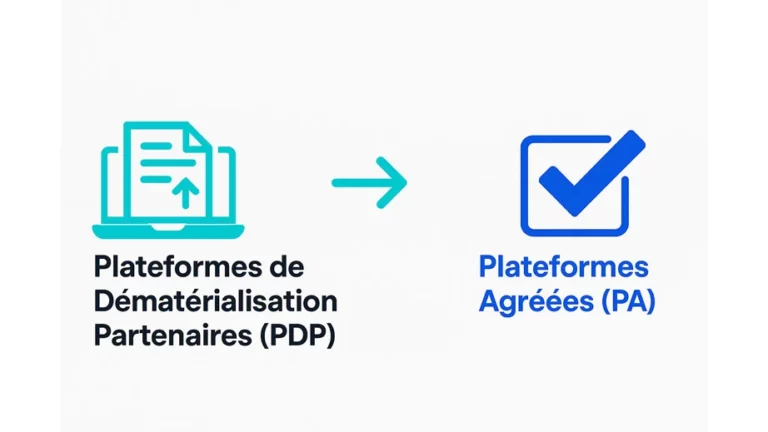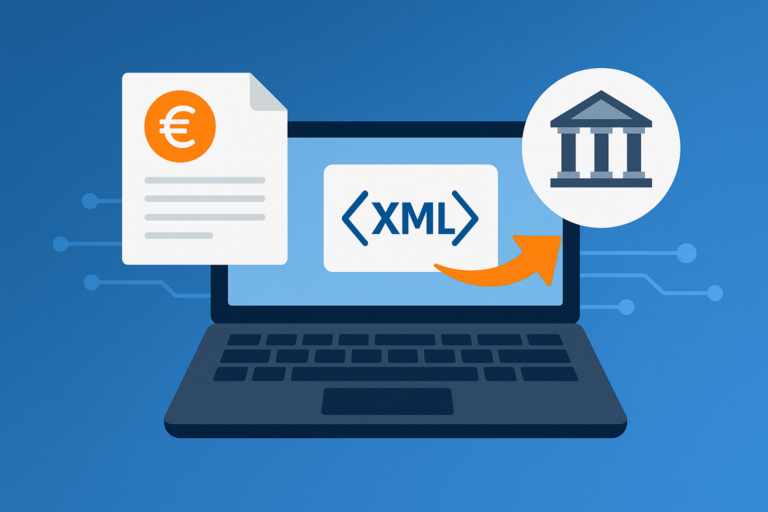Invoice management is a critical and strategic function for any business, but it can be time-consuming and complex, especially in high-volume transaction environments.manual invoice managementinvolves risks of human error, significant processing times and poor visibility into financial processes. In this context, automation andartificial intelligence (AI)become essential levers for optimizing this key function and transforming invoice management into an agile, secure process that is perfectly integrated into the company’s information systems.
1. Automation of Invoice Processing
Processing invoices is often a repetitive task that requires data entry, verification, and approval before payment. Traditionally, this involves processing paper documents or PDF files, manually entering information into accounting or management software, and managing data entry errors. This process can quickly become inefficient and costly.
L’automation, thanks to tools ofOCR (optical character recognition)andAI algorithms, revolutionizes this stage. These technologies make it possible toscan invoicesreceived in different formats (paper, email, PDF, etc.), to automatically extract relevant information such as amount, date, supplier and invoice numbers, then integrate them directly into accounting or ERP (Enterprise Resource Planning) systems. This drastically reduces theprocessing time, to avoid human errors and ensure that all information is correctly recorded, which speeds up the entire invoice lifecycle, from receipt to payment.
2. Automated Validation and Provisioning
Once the invoice has been scanned and the information extracted, it is essential to validate this data before making a payment. Traditionally, this process involved multiple exchanges between the purchasing, accounting, and sometimes legal departments to verify that the services or products have been delivered and that the amounts invoiced are correct. With the implementation ofautomated workflows, invoices are thus sent to the validator(s) directly in a dematerialized manner. Additional documents such as purchase orders and delivery notes can be added during validation to ensure that all elements are present for approval. This streamlines the entire approval process, reduces the risk of errors and guarantees that only correct invoices are validated.
3. Automatic Bank Reconciliation
The invoice reconciliation(or “matching”) is a crucial step in invoice management. Traditionally, this could be a lengthy process, requiring manual line-by-line verification. AI now makes it possible to automate this task. By usingsmart matching algorithms, systems can automaticallyreconcile invoiceswith bank transaction lines.
4. Monitoring and Control of Payments
Automation also allows for proactive tracking ofinvoice due datesand ensure that payments are made on time. Through integration with banking systems, dashboards can provide an overview of upcoming due dates or late payments, helping to maintain good supplier relationships and avoid late payment penalties.
5. Improved Search and Access to Invoices
The volume of invoices generated by a company can quickly become difficult to manage. Finding a specific invoice, whether for an internal control, an audit, or a supplier query, can be a tedious task if document management is manual. Thanks to AI,invoice searchbecomes much faster and more accurate. By usingintelligent search systems, users can search for invoices by asking simple questions like “invoice amount for supplier X in January 2025” or “price of item X for the month of January 2025”. The AI will then analyze all the documents and provide a response in real time, eliminating the need to manually search through hundreds or even thousands of files.
6. Data Security and Compliance
Invoice management involves sensitive and confidential information, such as amounts, bank details and tax data. It is essential to ensure thedata securitythroughout their lifecycle, from reception to archiving. Automation and AI systems integrateadvanced security protocolsto ensure that invoices are protected against unauthorized access. In addition, these technologies help to comply with legal requirements ofcompliancein terms of document retention. For example, systems can automatically manage invoice retention periods based on local legislation (such as the European Directive on the retention of tax documents), ensuring that companies comply with legal obligations without additional effort.
Conclusion
Automation and AI in invoice management are no longer a luxury, but a necessity for businesses looking to improve operational efficiency, reduce costs, and minimize the risk of human error. By automating invoice processes,scanning, validation, reconciliation, payment and archiving, companies can not only save valuable time, but also strengthen theirsecurity, compliance and transparency.
As AI becomes increasingly intelligent, businesses that adopt these technologies in invoice management will be better prepared to face the financial challenges of the future, while freeing up resources to focus on higher-value activities.




